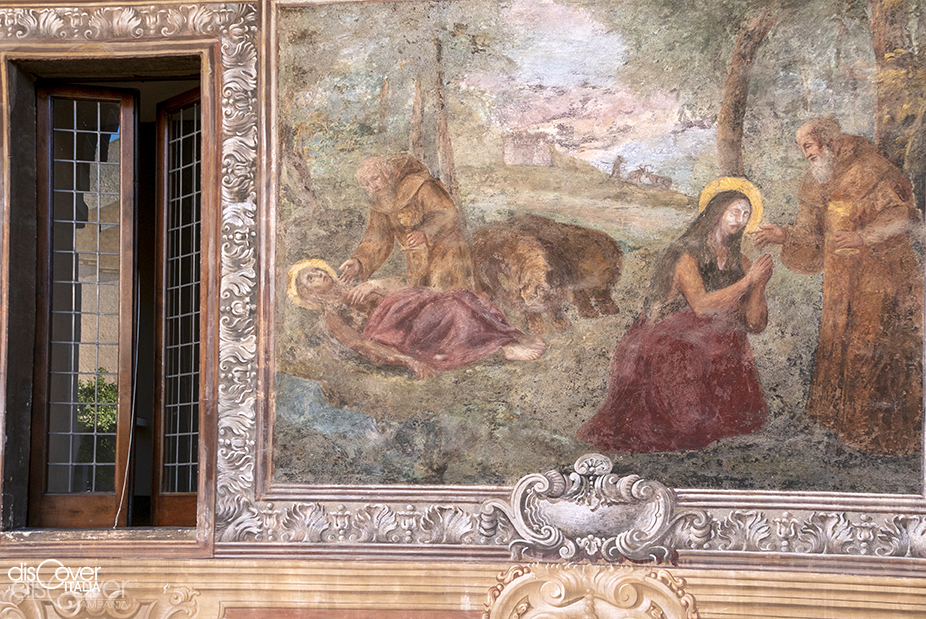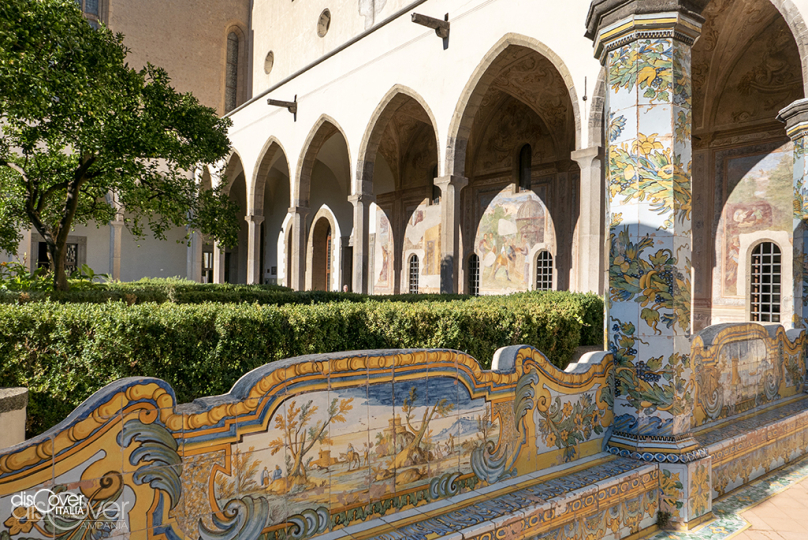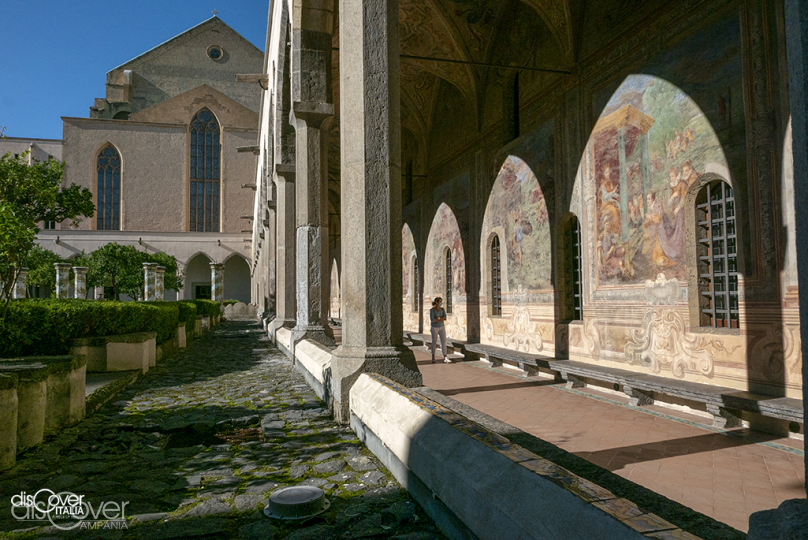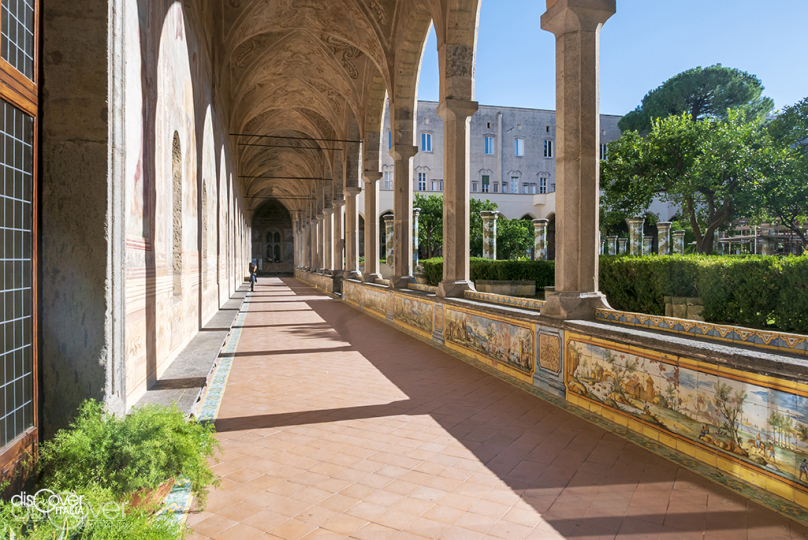The works began in 1310 on a project by Gagliardo Primario that led to the construction of two monasteries, female and male, and a basilica dedicated to Santa Chiara with an imposing bell tower. The church, opened for worship in 1340, was meant to house the graves of the royal family. The austere cusp facade, with a large rose window and a pronaos with pointed arches, is in the Provencal Gothic style present in the bell tower and inside the temple. This, with a single nave, 130 meters long, with ten chapels on each side, culminates in the presbytery, in the center of which stands the tomb of King Robert, the largest funeral monument of the Middle Ages, work of Tino di Camaino. Also spectacular are the tombs of Carlo di Calabria, Maria di Valois and Maria di Durazzo by an anonymous artist known as Maestro Durazzesco. Behind the nave opens the “Coro delle Monache”, one of the most important Gothic monuments in Naples, designed by Leonardo Di Vito with three naves, two of which are covered with cross vaults. The king commissioned the decoration to Giotto in 1328. Unfortunately, after the devastating bombing and the following fire that destroyed the basilica on the 4 August 1943 only few fragments survived. That event also decreed the disappearance of the baroque transformations, built by Domenico Antonio Vaccaro between 1739 and 1742. Immediately after the World War, started the reconstruction under supervision of Mario Zampino and the church reopened on 4 August 1953.
The Cloister of Wonders
Santa Chiara’s cloister is a work of art by itself, spared from the destruction of the war and celebrated for centuries. Commissioned by the abbess Suor Ippolita Carmignano, it was created by Domenico Antonio Vaccaro between 1739 and 1742, revolutionizing the garden with two perpendicular avenues, forming four distinct sectors. The two avenues are flanked by 64 octagonal majolica pillars, connected to each other by artistic seats of painted riggiole by the brothers Donato and Giuseppe Massa. The walls of the four sides of the cloister are entirely frescoed by an unknown artist from the early 1600s, perhaps a pupil of Belisario Corenzio.
The Museum of the Opera of Santa Chiara
On another level of the 14th century complex is located the Museum of the Opera of Santa Chiara. Four rooms, housing the ancient artistic and devotional jewels of the monastery spared from the bombs. The exhibition is inside next to the remains of a Roman thermal building from the end of the 1st century AD, of which are still visibile the main rooms fed by the Serino aqueduct. At the exit from the cloister, a fine 17th-18th century Nativity scene is exhibited.
Useful Information
From Monday to Saturday 9.30am-5.30pm
Sunday 10.00am-2.30pm
Full ticket 6 euro, reduced 4.50 euro, special 3.50 euro






